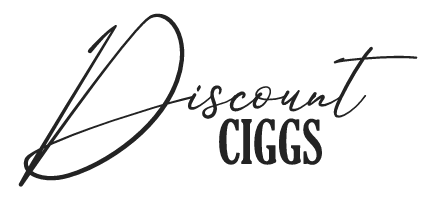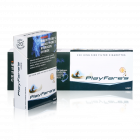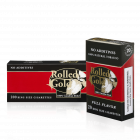Alternative Uses of Tobacco
While many associate the tobacco plant primarily with smoking and the ubiquitous cigarette, its versatility extends far beyond this singular use. This multifaceted plant has various lesser-known applications that might surprise many. Tobacco has a rich history, from its revered place in ancient medicine, introduced by Native Americans to settlers, to its modern therapeutic uses in therapies, such as nicotine patches for smoking cessation. But its utility doesn't end there. The industrial domain has witnessed tobacco's potential in biofuel production, while the agricultural sector sometimes employs it as a natural pesticide. Additionally, its unique texture and appearance have made dried tobacco leaves sought after in the arts and crafts world. As research and technology advance, our grasp of tobacco's potential strengthens, revealing its possible role in optimized crops tailored for diverse industries. The plant might even transform from a health concern to an environmental asset, promoting eco-friendly industries and bolstering the economy. In the realms of beauty and gastronomy, tobacco emerges uniquely; some advocate for its hydration properties in skincare, while gourmet chefs experiment with its distinct flavor in culinary creations. As we continue to unearth tobacco's potential responsibly, its surprises seem endless.
Tobacco in Medicine and Traditional Remedies
Origins of Tobacco in Medicine:
Tobacco, often associated primarily with smoking, has a deep-rooted history that intertwines with medicine and traditional remedies, a narrative largely unfamiliar to the masses. Delving back into the annals of history, one can discover the foundational role that Native Americans played in unveiling the medicinal attributes of this potent plant. These indigenous communities were not just utilizing native tobacco for ritualistic or recreational purposes; they identified and leveraged its therapeutic properties, marking the beginning of its journey in the realm of medicine.
As European settlers began to make their way to the New World, they encountered a myriad of unfamiliar plants, but tobacco stood out distinctly. The Native Americans introduced these settlers to the versatility of tobacco. Whether it was to alleviate pain, act as an anti-inflammatory agent, or even treat external wounds and infections, tobacco was often the go-to remedy. Its leaves, when crushed and mixed with other native herbs, became potent concoctions addressing a range of ailments. These practices highlighted tobacco's esteemed position in ancient medical traditions. Over time, as civilizations collided and knowledge exchanged hands, the use of tobacco in medicine became more widespread, eventually cementing its status not just as a recreational substance but also as a revered medicinal plant in various cultures.
Current Therapeutic Uses:
The incorporation of tobacco, specifically nicotine, in modern medicine, often astonishes those who see tobacco merely as a recreational substance. In today's world, where health and wellness are paramount, the therapeutic uses of tobacco-derived components, especially nicotine, have found a unique space. The potent chemical compounds inherent in tobacco, while notorious for their addictive qualities, have ironically been harnessed for therapeutic interventions. Notably, in the realm of addiction treatment itself, these compounds are making significant waves. Over the decades, as our understanding of addiction has evolved, so has our approach to treating it. Nicotine, the primary addictive substance in tobacco, has been repurposed in controlled and safe quantities to aid in combating the very addiction it fosters.
In the journey of breaking free from smoking addiction, many individuals turn to nicotine replacement therapies. Among the popular tools for this purpose are nicotine patches, which are designed to provide a steady, controlled release of nicotine throughout the day. These patches aim to satiate the cravings without the accompanying harmful effects of smoking, thus bridging the gap between addiction and cessation. The overarching idea is to gradually reduce the body's dependence on nicotine by lowering the patch's strength over time. Such innovations underscore the adaptability and potential of tobacco's primary compound in medical treatments. Through these therapeutic applications, nicotine, when used judiciously, showcases its potential to steer individuals away from the harmful practice of smoking, highlighting the evolving narrative of tobacco in modern medicinal frameworks.
The Controversy Surrounding Medicinal Tobacco:
The relationship between tobacco and medicine is a tapestry woven with both commendation and contention. While its medicinal properties have historical roots, the modern perspective on tobacco's role in therapeutic applications is layered with skepticism and intrigue. On one hand, tobacco, known for its notorious association with life-threatening diseases and its addictive nature, has always been in the spotlight for its detrimental health effects. The irony isn't lost on many that the same plant which has been a primary factor in numerous health issues globally is simultaneously heralded for its potential therapeutic benefits.
However, it's this paradoxical nature of tobacco that has ignited fervent debates in the medical community and beyond. Critics argue that endorsing any medicinal properties of tobacco might inadvertently promote its recreational use or downplay its associated risks. On the contrary, proponents believe that by harnessing specific beneficial components of the plant, like nicotine in controlled environments, significant strides can be made in various therapeutic domains, including addiction treatment. The dichotomy lies in distinguishing the potential healing attributes from its inherent harms. This ongoing debate emphasizes the complex narrative of tobacco, which, beyond its conventional image, might possess a potential that's yet to be fully understood or harnessed in the ever-evolving landscape of medicine.
Industrial and Unconventional Uses of Tobacco and its By-products
Tobacco in Biofuel Production:
While tobacco is predominantly associated with smoking, its potential in industrial sectors is burgeoning, notably in the realm of biofuel production. Pushing aside traditional raw materials like corn, the robust tobacco plant is gradually making its mark as a viable source of sustainable energy. The cellulose-rich leaves of the tobacco plant are becoming increasingly attractive to researchers, who believe that with the right processing, they can be transformed into efficient biofuels. As the world pivots towards cleaner and more sustainable energy solutions, the incorporation of unconventional raw materials like tobacco signals a revolutionary shift in energy production strategies. By tapping into the potential of such plants, industries are not only diversifying their energy sources but also introducing innovative methods to reduce their carbon footprint. In this quest for green alternatives, it's fascinating to see tobacco, a plant steeped in controversy for its health impacts, emerging as a potential contributor to a more sustainable future.
The Role of Tobacco in Pest Control:
While the mention of tobacco often conjures images of smoking and its associated health concerns, its role in agriculture presents a more positive narrative. Venturing beyond its traditional uses, tobacco has emerged as an unexpected ally for farmers in the battle against pests. Rich in alkaloids, the tobacco plant has properties that can deter a wide range of harmful insects, making it a potent, natural pesticide. Instead of resorting to chemical-infused solutions that can be detrimental to the environment and potentially harm beneficial insects, many farmers are turning to tobacco-infused concoctions as a greener alternative. By harnessing the natural defenses of the tobacco plant, they're not only safeguarding their crops but also minimizing the ecological footprint of their farming practices. It's a testament to the plant's versatility that, amidst the controversies surrounding its primary use, tobacco finds a place in sustainable agriculture, championing the cause of eco-friendly pest control and showcasing its potential as more than just a source of nicotine.
Crafting and Artistic Uses of Tobacco Leaves:
Tobacco, with its rich cultural and historical ties, is also carving a niche for itself in the artistic sphere, showcasing a side often overshadowed by its more well-known uses. The distinct texture and aesthetic of dried tobacco leaves have piqued the interest of artisans and craft enthusiasts alike. These leaves, with their intricate patterns and rustic appeal, are being innovatively repurposed into decorative pieces, ranging from wall hangings to centerpiece arrangements. Their organic charm seamlessly complements various art mediums, introducing a touch of nature into contemporary design. As sustainability and eco-friendly trends continue to dominate the art world, the utilization of natural elements like tobacco leaves underscores a movement towards merging traditional resources with modern aesthetics. Moreover, by integrating these leaves into artworks, artisans breathe new life into what would otherwise be discarded, highlighting tobacco's multifaceted nature. In this transformative journey, from fields to art studios, tobacco is demonstrating its versatility, proving that its value extends far beyond its conventional applications, and can elegantly grace our living spaces in the form of crafted masterpieces.
The Potential Future of Tobacco in Industries Outside of Smoking
Research and Technological Advancements:
The trajectory of tobacco's role in various industries is experiencing a transformative shift, especially as our collective understanding of the plant deepens with each passing year. As technology surges forward, researchers are harnessing advanced tools to explore the nuances of tobacco and its potential applications beyond just smoking. Central to this evolution is the groundbreaking work being done in the realm of genome sequencing. By mapping the complete genetic material of tobacco, scientists are gaining invaluable insights into the plant's inherent characteristics, its growth patterns, and potential enhancements that can be made at the molecular level.
This sophisticated understanding opens up a plethora of opportunities for various industries. Tailored tobacco crops, optimized for specific applications, are becoming a tangible reality. Whether it's for pharmaceutical applications, where specific compounds of the plant can be accentuated, or in the agricultural sphere, where tobacco's pest deterrent properties might be emphasized, the possibilities are vast and varied. These breakthroughs, bridging traditional knowledge with contemporary science, signal a promising future for tobacco. As industries become more discerning and sustainable in their practices, the optimized use of resources like tobacco, driven by research and technology, might become a cornerstone of innovation and progress.
Environmental and Economic Impacts:
Tobacco, long pigeonholed for its association with smoking, is emerging as a potential powerhouse in various sectors, particularly from an environmental and economic perspective. The shift towards sustainable practices is fostering a renewed interest in harnessing tobacco's versatile properties for eco-friendly applications. As industries globally grapple with the challenges of environmental degradation and seek out sustainable alternatives, tobacco presents itself as a potential solution. Its potential for biofuel production, pest control, and even waste management offers avenues where both ecological balance and industrial growth can coexist. This green trajectory, where tobacco can be cultivated and processed with minimal environmental impact, holds the promise of transforming it into an environmental asset.
Economically, this renaissance of tobacco has far-reaching implications, particularly for the agricultural sector. Farmers, traditionally reliant on tobacco for their cash crop status, now have the potential to tap into more diverse and sustainable markets. By pivoting to these new applications of tobacco, they could secure better prices and more stable demand, ensuring economic stability. Moreover, the creation of green industries centered around tobacco could lead to job creation, infrastructure development, and a boost in local economies, especially in regions where tobacco farming is predominant. As the world inches closer to a sustainable future, the blend of tobacco's environmental and economic potential could play a pivotal role in reshaping industries and revitalizing communities.
Tobacco in the Beauty and Skincare Industry
The Richness of Tobacco Oil:
Tobacco, traditionally linked with smoking and its associated health implications, has found an unlikely ally in the beauty and skincare industry. Delving into the intricacies of this plant reveals an aspect often overlooked: the richness of tobacco oil. Extracted meticulously from the plant, tobacco oil has begun to intrigue cosmetic researchers and skincare enthusiasts alike. The allure lies in its unique composition, particularly its high antioxidant content, which plays a critical role in combating skin damage and promoting rejuvenation. These antioxidants aid in neutralizing harmful free radicals, thereby potentially slowing down the aging process and ensuring skin retains its youthful elasticity.
However, what's capturing even more attention is tobacco oil's purported hydrating properties. Advocates for the oil emphasize its ability to deeply moisturize and nourish the skin, providing hydration that few other oils can rival. Such deep hydration can be a game-changer, especially for individuals with dry or mature skin, offering them a natural solution to their skincare woes. While the world of beauty is no stranger to unconventional ingredients, tobacco oil's entrance signals a shift in understanding the potential benefits of traditionally stigmatized plants. As the skincare industry continues to evolve and innovate, it remains to be seen just how integral tobacco oil will become in the beauty routines of the future. However, its promising start indicates a bright horizon for this dark horse of skincare.
Anti-Aging Benefits and Concerns:
In the ever-evolving realm of beauty and skincare, tobacco has emerged as a topic of keen interest and debate. Its foray into this industry is surrounded by both intrigue and skepticism. On one hand, proponents tout its potential anti-aging benefits, citing the plant's rich antioxidant content that may combat skin damage, improve elasticity, and reduce the appearance of fine lines. They argue that, when incorporated into skincare routines, tobacco could be the secret weapon against the inexorable march of time on the skin. Conversely, critics and cautious observers highlight potential side effects, questioning the long-term implications of introducing tobacco-based products into daily skincare regimens. They ponder whether the potential risks might outweigh the promised benefits. In this dichotomy of views, the beauty industry finds itself at a crossroads, grappling with the promise of youthful skin and the responsibility of ensuring consumer safety. The ongoing discourse serves as a reminder of the intricate balance between innovation and prudence in the world of skincare.
Tobacco in the Food and Beverage Industry
Tobacco-Infused Culinary Delights:
Within the vibrant tapestry of the food and beverage world, tobacco is emerging as an unexpected yet captivating thread. Traditionally associated with smoking, it's now piquing the interest of innovative gourmet chefs who see beyond its conventional uses. These culinary artists are venturing into uncharted territory by incorporating tobacco into their creations, weaving its unique flavor profile into both savory and sweet dishes. Envision a rich tobacco-infused sauce that adds a smoky depth to a main course or a dessert where tobacco notes meld seamlessly with chocolate or caramel, offering a dance of flavors on the palate. Such explorations are not just about novelty but also about pushing the boundaries of culinary art, challenging traditional flavor paradigms, and providing diners with an experience that's both familiar and refreshingly new. As the culinary world continues its relentless quest for innovation, tobacco's entrance into the arena showcases the limitless potential of ingredients, reimagined and reinvented in the hands of creative minds.
Beverage Pairings and Infusions:
In the intricate dance of flavors that define the food and beverage industry, tobacco is stepping onto the floor as an audacious partner, especially in the realm of drinks. Moving beyond its stereotypical associations, tobacco is being embraced by mixologists and distillers alike, keen to explore its potential in beverage crafting. Envision a glass of whiskey, its deep amber hue carrying the subtle undertones of tobacco, adding a layer of complexity and depth to each sip. Or picture a meticulously crafted cocktail, where tobacco infusions intertwine with other ingredients, creating a symphony of flavors that beckon to those with an adventurous spirit. Such concoctions aren't designed for everyone; they challenge traditional beverage norms and demand a certain boldness from their consumers. But for those willing to embark on this gustatory journey, the reward is a taste experience that's both novel and nostalgically familiar, a testament to the innovation and creativity that continuously redefine the beverage landscape.
Conclusion
Historically shadowed by its controversial status, tobacco is now emerging from the sidelines to showcase its multifaceted potential. Its journey, from being the cornerstone of medical remedies to making a splash in modern mixology, underscores the dynamic nature of this plant. As it defies conventions, integrating itself into industries one wouldn't typically associate with, it becomes evident that tobacco's narrative isn't just limited to its notorious past. Its evolution is a testament to human ingenuity, finding value and potential in what was once deemed detrimental. By leveraging its attributes responsibly and innovatively, we're opening doors to a realm of possibilities previously unimagined. In this unfolding story, one thing becomes clear: the enigmatic tobacco plant, with all its complexities, still has many secrets left to share, and as we continue to explore, who can truly predict the myriad of ways it will further entwine itself into our future?
FAQs
Can tobacco be used as an essential oil?
While tobacco oil exists, it's different from typical essential oils and isn’t widely used in aromatherapy due to its nicotine content.
Is tobacco in skincare safe?
As with any ingredient, it's vital to conduct patch tests and consult dermatologists before full application.
Are there tobacco-flavored foods?
Yes, some chefs incorporate tobacco for its unique flavor, but it's essential to consume such dishes in moderation.
Is tobacco biofuel eco-friendly?
Preliminary research suggests it can be sustainable, but more studies are needed to confirm its environmental benefits.
Can smoking benefits be derived from these alternative uses?
These uses focus on tobacco's other properties, not on delivering nicotine like cigarettes.
References
- Heart and Stroke Foundation of Canada: www.heartandstroke.ca
- Canada - House of Commons: ourcommons.ca
- Non-Smokers’ Rights Association: nsra-adnf.ca



